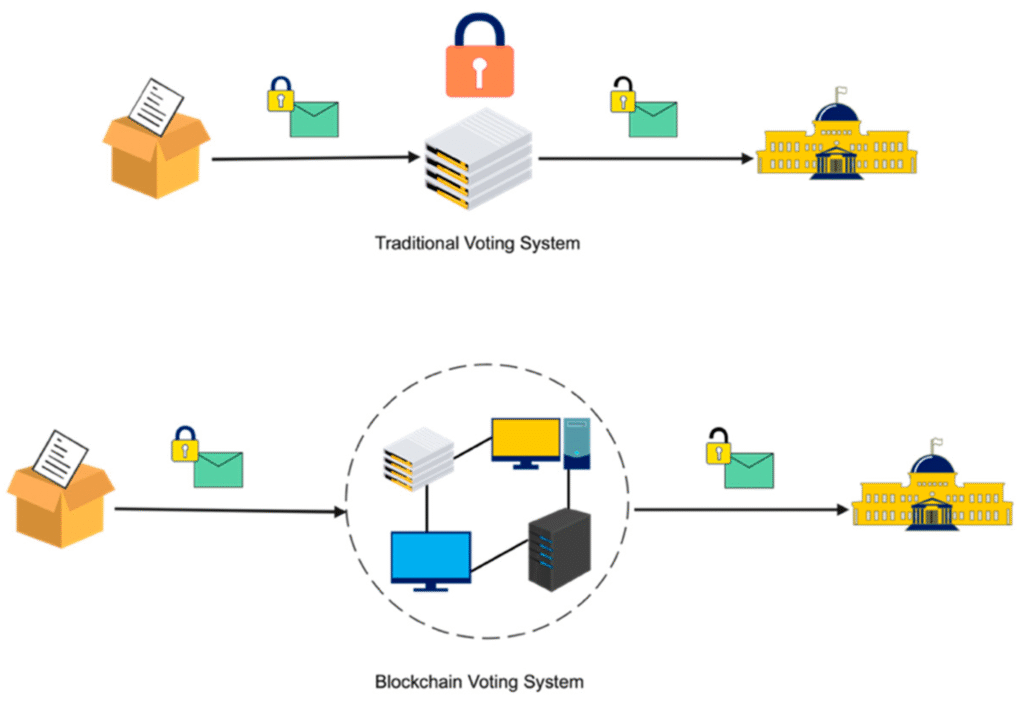Alright, let me just say this first—I had no idea what I was getting into when I said yes to building a decentralized voting audit system for a university project. It started with a half-baked idea over ramen and too many browser tabs: “Let’s use blockchain to make voting systems more transparent with algorand.”
Cool in theory, right? Except none of us had ever used Algorand. Or Svelte. Or built anything remotely close to an “audit system.” But hey, that’s the fun part—jumping into the unknown with a cup of cold coffee and a stubborn belief that Stack Overflow will somehow save the day by .
So here’s the real story. Raw, unfiltered, and not dressed up in fancy jargon.
The Spark: Where It All Started with Algorand

I’ve always been low-key obsessed with the idea of fair voting—like, what if we could actually prove elections weren’t messed with? Not just in government, but in college fests, employee polls, startup board decisions… stuff that matters to people who don’t want to play politics.
That curiosity led me down the rabbit hole of blockchain voting. And not the hyped stuff. I wanted real-time audits. Live logs. Tamper-proof transparency. A system where even a non-tech person could say, “Yep, that vote was counted. And no one messed with it.”
And that’s where Algorand came in.
Why Algorand ? And Not the ‘Hyped Chains’
Ethereum was my first thought, of course. Because when you think “blockchain,” that’s where your brain goes. But two minutes into gas fees and it was already a hard no. We were building something for college and NGOs—not crypto millionaires.
Algorand, on the other hand, was fast, affordable, and had that pure proof-of-stake thing going for it. Plus, the dev community was actually helpful—like people reply to you kind of helpful, which is rare.
Their smart contract layer wasn’t overly complicated either, which was honestly a relief. I’m not a Solidity wizard. And I didn’t want to spend three weeks debugging one function just to validate a damn vote.
Algorand felt… calm. Predictable. Like the friend who shows up on time and brings snacks.
Svelte + Algorand: The Underdogs I Fell In Love With
Now, frontend. I could’ve gone with React, but I was tired of the boilerplate drama. Enter: Svelte.
God, Svelte was refreshing. No virtual DOM fights. No over-engineered state management drama. Just components that made sense.
Writing my first interactive dashboard in Svelte felt like stretching your legs after a long flight. You write less, it does more, and you’re not constantly Googling how to handle a form.
And the best part? The reactivity felt natural. Like, when a vote came in and the audit log updated in real-time, it just… worked.
No Redux, no Context hell—just straight-up logic. It’s criminal how underrated this framework still is.
Real Frustrations: Where It Almost Fell Apart
Let me not romanticize this too much though. The backend/frontend communication was messy. Setting up the smart contract interface on the frontend with Svelte required some weird handshakes through Algosigner. And browser compatibility? Don’t get me started. Safari hated everything. It felt like I was begging the browser gods to let the extension read public keys.
Then there was the panic moment—around 2AM on a rainy Tuesday—when someone found a way to resubmit votes by refreshing. Yeah. My stomach dropped so fast, I forgot I had coffee in my hand and spilled it on my notebook.
That one bug taught me more about frontend security and blockchain validation than any tutorial ever did.
Eventually, we locked vote hashes to wallet IDs and timestamps, with the audit system verifying them before final registration.
The Audit Layer: The Heart of It All
Okay, this part I loved. The audit system was like the eyes of the platform. Every time a vote was cast, it was logged in Algorand’s ledger. We pulled the transaction hash, verified sender identity, and posted it to a live log on the frontend.
Voters could literally watch votes appear, one by one. No names. Just hashes. Clean. Transparent. Real-time democracy, in its own weird nerdy way.
And the best part? You could go back, click a hash, and get the entire transaction metadata—date, time, wallet, and even a JSON snapshot of the vote structure.
I wanted people to feel like auditors, not just users. Because when people see how something works, they tend to trust it more.
No black boxes. No “just trust us” lines. Just proof.
The Human Side: Real People, Real Reactions
I remember demo day. We invited a few professors, some admin staff, and students to try it out.
I expected silence, maybe a few nods. But this one faculty member—who’s usually skeptical of “techy stuff”—sat back and said:
“Wait… so I can actually see that my vote is there? And no one can change it?”
That hit me.
Because all the late nights, the bugs, the stress, the Algorand docs open in five tabs—it was worth it. Seeing someone who’s not even into tech feel empowered by a simple transparent system… that’s the magic. That’s why I build.
A Few Lessons I Won’t Forget
If you’re thinking of building something like this—or even just exploring Algorand and Svelte—here’s what I learned the hard way:
- Start small. Our first prototype just validated a yes/no vote with wallet ID. It grew from there.
- Test with non-devs. We built a dashboard that we liked, but until my roommate tested it and said, “I have no clue what this means,” we didn’t realize it was too geeky.
- Don’t overcomplicate. Transparency doesn’t mean complicated. It means visible. Keep it simple.
- Frontend matters. If people don’t understand what they’re seeing, they won’t trust it. Svelte helped us keep things clear, responsive, and honestly… beautiful.
Would I Do It Again?
Hell yeah.
Even with the frustration, the caffeine, the “why isn’t this working!?” screams at 3AM—this project changed how I see trust and technology.
Decentralized systems aren’t about tech. They’re about people. About showing someone, “Hey, we’re not hiding anything.”
Read our more blogs-How to Transition to a Career in Neurotech Development



Pingback: Designing a Tech Portfolio That Attracts Recruiters - BGSs
Pingback: Flask & IoT-Powered DIY Real-Time Pollen Tracker